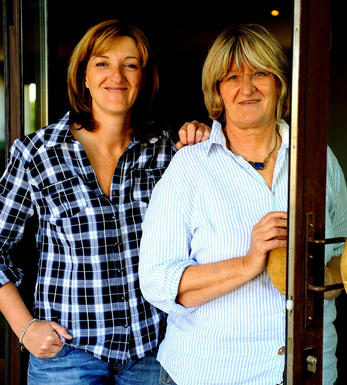
About this WINE

Domaine de Marcoux
Sisters Sophie and Catherine Armenier have elevated Marcoux to the very highest ranks. Today, Sophie diligently runs the winery, while her son Vincent Estevenin looks after the vineyards. Now, there are 27 hectares split into over 20 parcels: 18 hectares lie right in the heart of the prime Châteauneuf-du-Pape terroir of La Crau plateau. The remainder rest in Lirac and the other Côtes du Rhône villages. Certified as organic by Ecocert as early as 1991, this year marks four decades of rigorous organic and then biodynamic principles.
The domaine makes three main wines: a Lirac, their main Châteauneuf-du-Pape and an exceptional Châteauneuf-du-Pape Vieilles Vignes – the top cuvée from this organically certified domaine. It’s made from two parcels of outstanding, old-vine Grenache: Charbonnières, planted in 2000 and Esqueirons, planted in 1949.
The cool, freshness of the 2021 vintage really plays to Domaine de Marcoux’s stylistic strengths of purity and minerality, aided as ever by their dedication to biodynamics. Their wines are always balanced but, at 1.5% abv lower than in 2020, both the Lirac and the Châteauneuf-du-Pape are especially gorgeous this year. These wines epitomise the crunchy, deliciously fresh appeal of 2021; they are lifted, fruit-forward and fragrant, and such a delight to drink.

Châteauneuf-du-Pape
The most celebrated village of the Southern Rhône, Châteauneuf-du-Pape is the birthplace of the now indispensable French Appellation d’Origine Contrôlée system – imperfect though it may be. Compared to the Northern Rhône, the vineyards here are relatively flat and often feature the iconic galet pebbles – the precise benefits of which are a source of much debate. Minimum alcohol levels required by the AOC are the highest in France, but at 12.5% it is well below the natural generosity of Grenache, which only achieves its full aromatic potential when it is fully ripe and laden with the resultant high sugars. Syrah and Mourvèdre contribute the other defining elements in the blend, adding pepper, savoury spice and structure to the decadent Grenache. There are a further 10 permitted red grape varieties which can be used to adjust the “seasoning”. Of the five white varieties permitted, it is Grenache Noir’s sibling – predictably perhaps – Grenache Blanc, which dominates, though Roussanne shows a great deal of promise when handled well, notably at Château de Beaucastel.

Southern Rhône Blend
The vast majority of wines from the Southern Rhône are blends. There are 5 main black varieties, although others are used and the most famous wine of the region, Châteauneuf du Pape, can be made from as many as 13 different varieties. Grenache is the most important grape in the southern Rhône - it contributes alcohol, warmth and gentle juicy fruit and is an ideal base wine in the blend. Plantings of Syrah in the southern Rhône have risen dramatically in the last decade and it is an increasingly important component in blends. It rarely attains the heights that it does in the North but adds colour, backbone, tannins and soft ripe fruit to the blend.
The much-maligned Carignan has been on the retreat recently but is still included in many blends - the best old vines can add colour, body and spicy fruits. Cinsault is also backtracking but, if yields are restricted, can produce moderately well-coloured wines adding pleasant-light fruit to red and rosé blends. Finally, Mourvèdre, a grape from Bandol on the Mediterranean coast, has recently become an increasingly significant component of Southern Rhône blends - it often struggles to ripen fully but can add acidity, ripe spicy berry fruits and hints of tobacco to blends.



Buying options
Add to wishlist
Description
The Armenier sisters were amongst the first of the Châteauneuf producers to buy some land in the appellation of Lirac, their vines located in St Laurent des Arbres on the ‘rive droit’ of the Rhône. Red clay and sand soils are planted with the usual varietals, with a little more Mourvèdre (15 percent) than the other wines in the Marcoux family. The 2013 is particularly successful, its glossy, velvet fruit typical of the village, its depth and poised, finely-etched tannins betraying the self-confidence of supremely competent winemaking.
Simon Field MW - Rhône Buyer
I hope I am not betraying confidence by revealing that in a recent conversation, the celebrated Rhône expert John Livingstone- Learmonth confessed to me that Marcoux was one of his very favourite estates in the region. It is hard to disagree, such is the attention to detail adopted by sisters Sophie and Catherine Armenier. Sophie compares 2013 to 1988 and 1989, relatively late and distinguished by discreet complexity and great finesse. It’s great to see how these qualities have also been captured on the other side of the river in Lirac. While this domaine was purchased in 2003 by the Armenier and Canto families, with Canto family managing the vintages and the Armenier sisters making the wines, the Canto family sold thier shares in 2010, and the estate is now completely run by the team at Marcoux. The 2013 Domaine Lorentine Lirac (40% Grenache, 30% Syrah and 30% Mourvedre aged 12 months in concrete tank) has more minerality and dark fruit than the straight Côtes du Rhône, with pretty kirsch, blueberry, ground herbs and licorice nuances all emerging from the glass. Medium to full-bodied, pure, fresh and possessing the hallmark elegance and seamlessness of this estate, it's an excellent 2013 to drink over the coming 4-5 years.
Jeb Dunnuck - Wine Advocate Issue#215 Oct 2014
wine at a glance
Delivery and quality guarantee